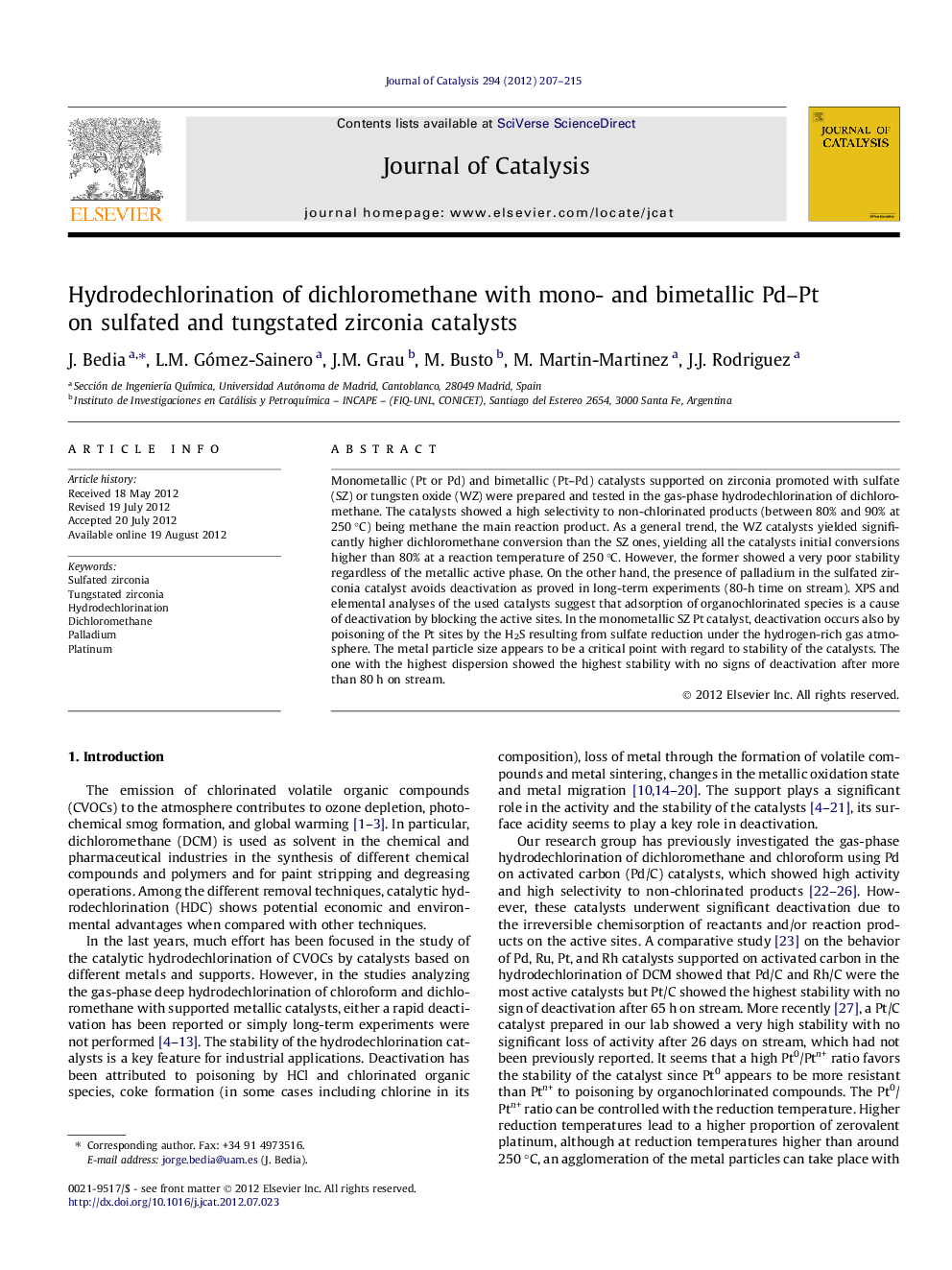| کد مقاله | کد نشریه | سال انتشار | مقاله انگلیسی | نسخه تمام متن |
|---|---|---|---|---|
| 61395 | 47578 | 2012 | 9 صفحه PDF | دانلود رایگان |

Monometallic (Pt or Pd) and bimetallic (Pt–Pd) catalysts supported on zirconia promoted with sulfate (SZ) or tungsten oxide (WZ) were prepared and tested in the gas-phase hydrodechlorination of dichloromethane. The catalysts showed a high selectivity to non-chlorinated products (between 80% and 90% at 250 °C) being methane the main reaction product. As a general trend, the WZ catalysts yielded significantly higher dichloromethane conversion than the SZ ones, yielding all the catalysts initial conversions higher than 80% at a reaction temperature of 250 °C. However, the former showed a very poor stability regardless of the metallic active phase. On the other hand, the presence of palladium in the sulfated zirconia catalyst avoids deactivation as proved in long-term experiments (80-h time on stream). XPS and elemental analyses of the used catalysts suggest that adsorption of organochlorinated species is a cause of deactivation by blocking the active sites. In the monometallic SZ Pt catalyst, deactivation occurs also by poisoning of the Pt sites by the H2S resulting from sulfate reduction under the hydrogen-rich gas atmosphere. The metal particle size appears to be a critical point with regard to stability of the catalysts. The one with the highest dispersion showed the highest stability with no signs of deactivation after more than 80 h on stream.
The presence of palladium in the sulfated zirconia catalyst avoids deactivation as proved in long-term experiments. The metal particle size appears to be a critical point with regard to stability of the catalysts.Figure optionsDownload high-quality image (44 K)Download as PowerPoint slideHighlights
► Pd and Pt catalysts supported on sulfated (SZ) and tungstated (WZ) zirconia were active in the HDC of DCM.
► WZ catalysts showed a very poor stability regardless of the metal active phase.
► Pd-containing catalysts on SZ showed a high stability in long-term experiments.
► The metal particle size appears to be a critical point with regard to stability of the catalysts.
► Methane was the main reaction product in all the cases.
Journal: Journal of Catalysis - Volume 294, October 2012, Pages 207–215